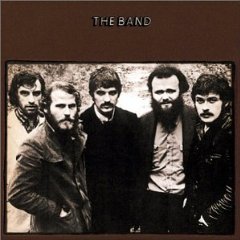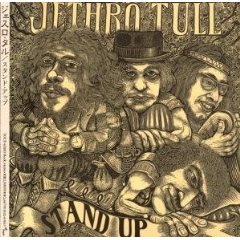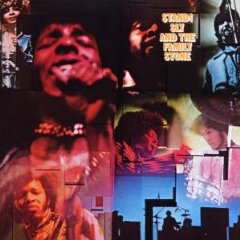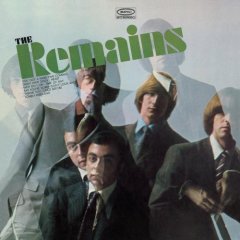When I think of 1969, I think the end of the hippie dream, the fading of peace and love. After the violence of the Democratic convention in ’68, it appeared the Yippies were taking precedence over the original anti-war movement that so many of us bought into when we were at college.
 Despite the triumph of Woodstock, the year ended on the foreboding trajedy of Altamont. It was the year the Beatles said farewell, another dream that was ending. So when I think about 1969, I don’t necessarily think of great albums first. But as Mojo Magazine points out in a recent special edition with a piece aptly titled 69 from 1969, which we acknowledge with the headline above, there was a motherlode of great music released in 1969. The music was changing and the early ’70s gave us another wave of great music as well with the dawn of the singer-songwriter era. But the decade’s last year included an impressive list of offerings.
Despite the triumph of Woodstock, the year ended on the foreboding trajedy of Altamont. It was the year the Beatles said farewell, another dream that was ending. So when I think about 1969, I don’t necessarily think of great albums first. But as Mojo Magazine points out in a recent special edition with a piece aptly titled 69 from 1969, which we acknowledge with the headline above, there was a motherlode of great music released in 1969. The music was changing and the early ’70s gave us another wave of great music as well with the dawn of the singer-songwriter era. But the decade’s last year included an impressive list of offerings.
You can find music just as good or better from any year in the ’60s. But since it’s 40 years on for this watershed year, we have a poll below in which you can vote. To refresh your memory, here are some of the highlights in no particular order:
 The Band, The Band: Their second release and perhaps my favorite, along with Stage Fright, filled with songs that make up one of the foundations of today’s Americana movement.
The Band, The Band: Their second release and perhaps my favorite, along with Stage Fright, filled with songs that make up one of the foundations of today’s Americana movement.
Everybody Knows This Is Nowhere, Neil Young: His second, and although I for one liked the weak-selling debut, this unquestionably has several of his standards.
Led Zeppelin I, Led Zeppelin: Some prefer the second, released in late 1969, but this really had the bigger impact as far as influencing the music scene. It was hard rock, but quite different in some ways than anything before.
Stand Up, Jethro Tull: Arguably their best, predating the more progressive leanings of the band.
 A Salty Dog, Procol Harum: Speaking of prog, but really is it? Using classical ideas and instrumentation in a tasteful combination is more like it.
A Salty Dog, Procol Harum: Speaking of prog, but really is it? Using classical ideas and instrumentation in a tasteful combination is more like it.
The Gilded Palace Of Sin, The Flying Burrito Brothers: Gene Clark, the Byrds and others had recorded tracks and some nearly full albums of what was to be called country rock, but Gram Parsons’ first project as a leader really set the stage for the Eagles and those who followed.
Tommy, the Who: Many cite other Who albums as superior to this and that’s probably true, but none had a bigger influence in the grand scheme of things.
Stand, Sly & the Family Stone: This is loaded with classic Sly songs, Everyday People, I Want To Take You Higher, Sing A Simple Song, You Can Make It If You Try.
Crosby, Stills & Nash, Crosby, Stills & Nash: Deja Vu had some better songs on it, but as a trio this was their highlight.
Dusty In Memphis, Dusty Springfield: A peak from a remarkably consistent vocalist, career defining.
Blind Faith, Blind Faith: The one-off, with about 15 minutes of filler, still holds up as a solid outing with at least a couple of rock ‘n roll classics.
Abbey Road, the Beatles: A fitting sendoff, which was recorded after but released before their official swan song, Let It Be.
In A Silent Way, Miles Davis: I preferred the first real experiment into fusion, Miles In The Sky (1967), but there is no doubting the impact of this outing.
Clouds, Joni Mitchell: I always think of this as coming out earlier than 1969, but her career didn’t take off in earnest as a solo performer until the ’70s with Blue and For The Roses.
Then Play On, Fleetwood Mac: The last gasp of the original Mac with Peter Green. It may have been the last but it has some wonderful blues romps, including Oh Well.
Let It Bleed, the Rolling Stones: Their decided shift back to blues-influenced rock on Beggar’s Banquet is followed by incorporating country blues into the mix. One of their last great ones.
There are many others, the Allman Brothers’ debut; Fairport Convention’s Liege & Lief, not as well known in the States as the U.K., where it is a folk-rock staple; Santana’s and Chicago’s first. The list goes on.
What do you think? Vote for the best album of 1969.
This article is also available over at BabyBoom Review at this link.
 The Remains were known for their intense live shows and I was lucky enough to see them twice, once in their neighborhood and once as the opening act for the Beatles at Shea Stadium on the Fab Four’s last tour (1966) of the States.
The Remains were known for their intense live shows and I was lucky enough to see them twice, once in their neighborhood and once as the opening act for the Beatles at Shea Stadium on the Fab Four’s last tour (1966) of the States.